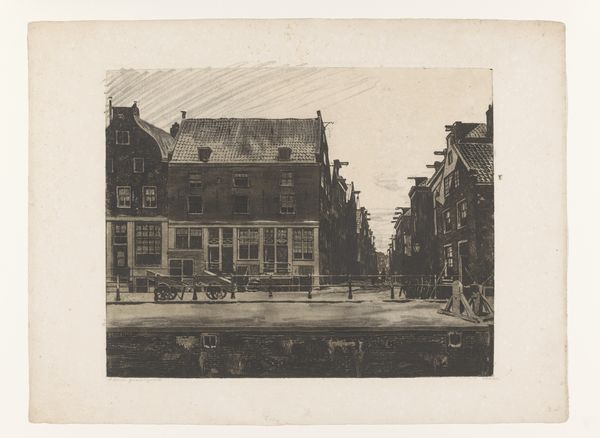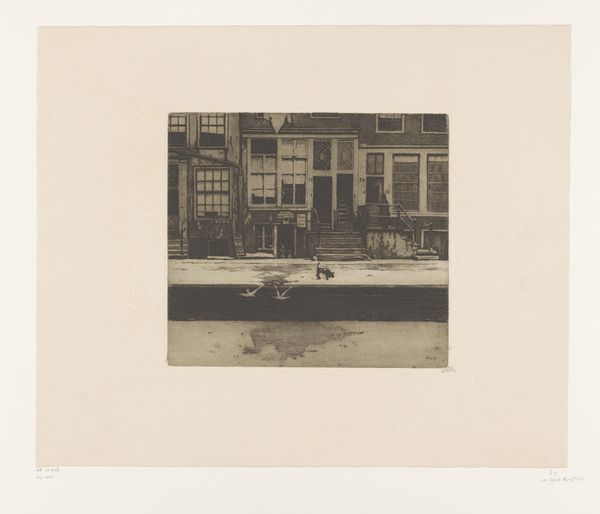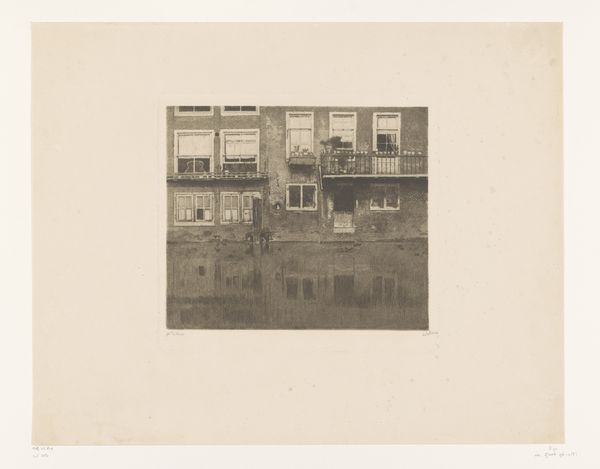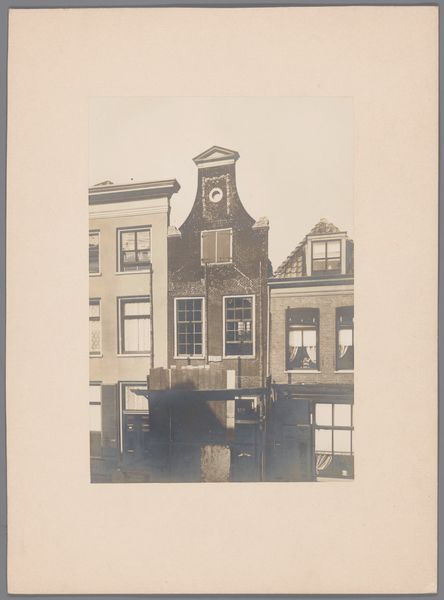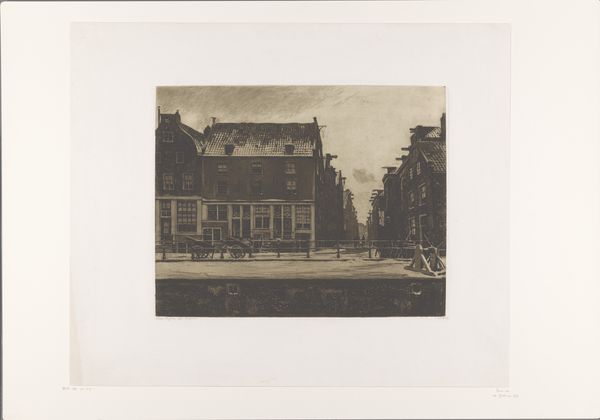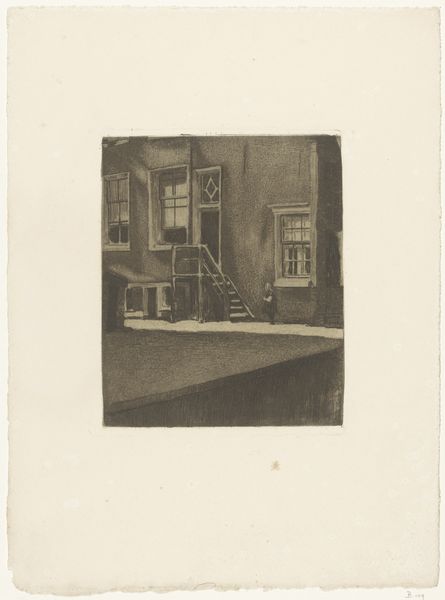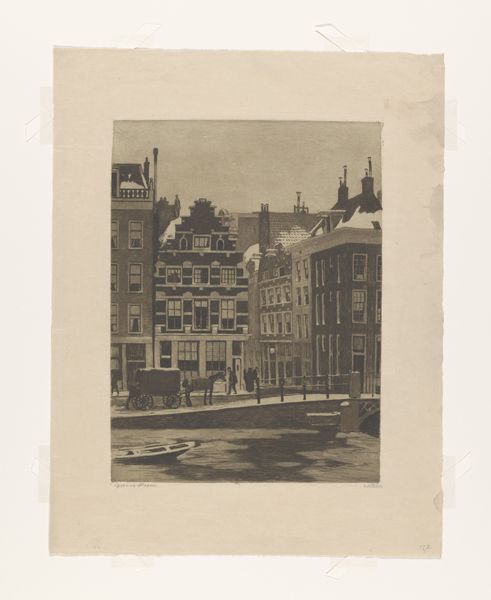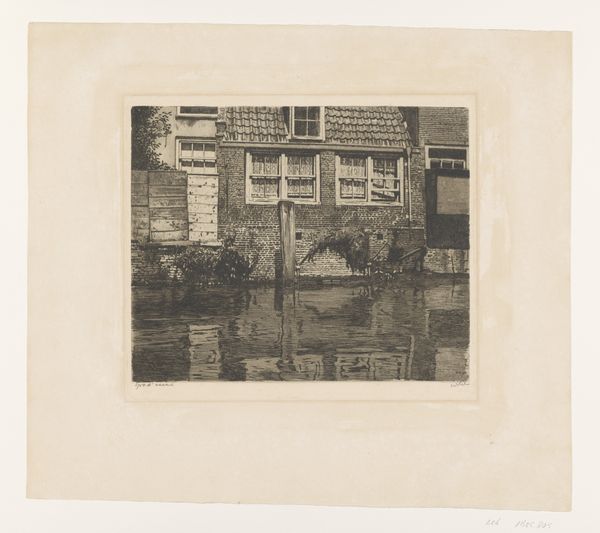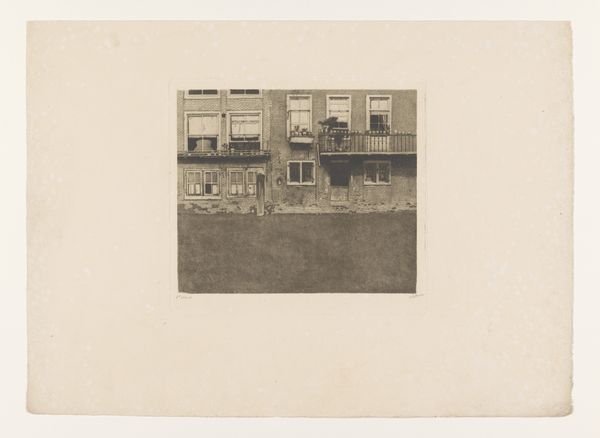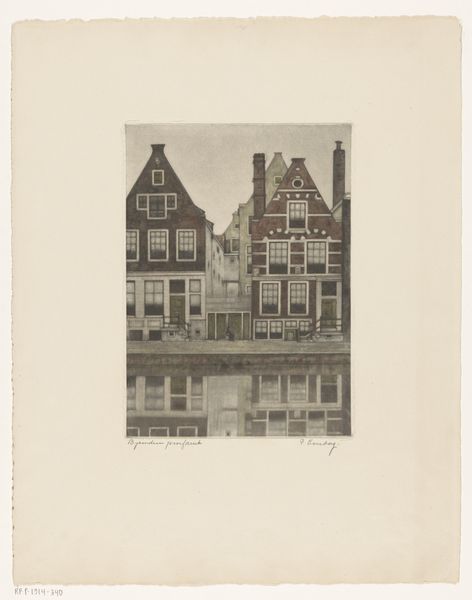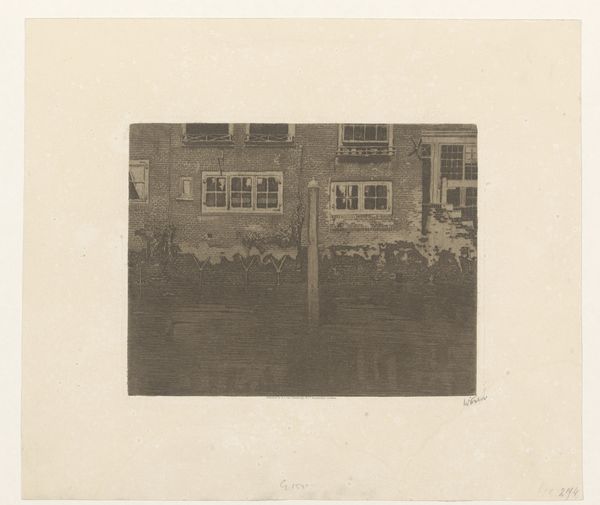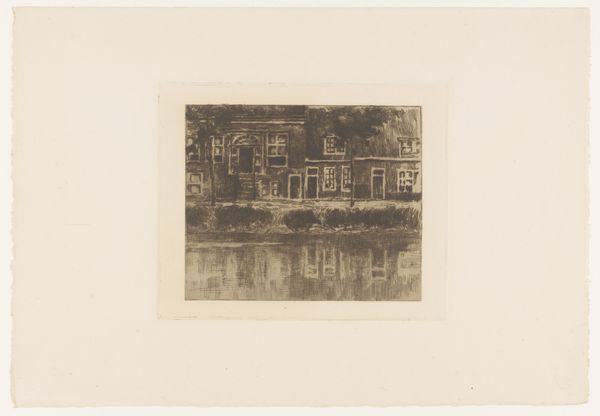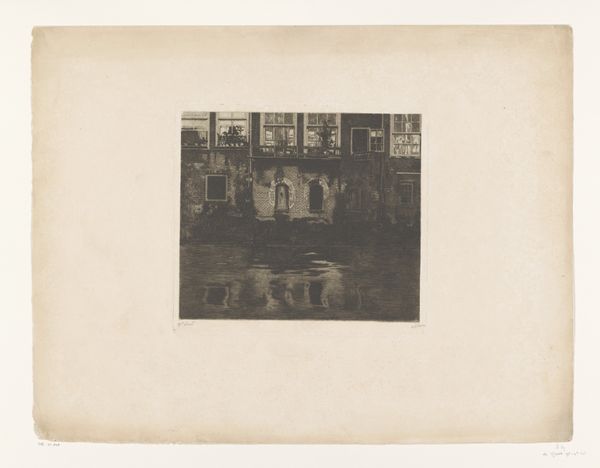
print, etching
#
dutch-golden-age
# print
#
etching
#
cityscape
#
realism
Dimensions: height 258 mm, width 344 mm
Copyright: Rijks Museum: Open Domain
Editor: So this etching by Willem Witsen, "Huizen aan de Oudezijds Achterburgwal in Amsterdam" from around 1905, depicts a pretty somber Amsterdam canal house. What strikes me most is the emphasis on the facades and their reflection on the canal – what do you make of this play between reality and its watery mirror? Curator: The reflection, the doppelganger image, immediately introduces themes of duality and memory. Water, in symbology, is often tied to the unconscious, to our buried selves. So, what does it mean when the architecture, the solid and established face of society, is given a fluid, spectral counterpart? What societal truths are submerged? Editor: That’s fascinating. It almost suggests a hidden or repressed side to the city’s identity. Do you see that mirrored in the architectural details as well? Curator: Precisely. Consider the windows, they’re eyes, aren't they? They allow for an interchange between interior and exterior lives. Also, notice the strategic use of shadow, partially obscuring detail to suggest hidden elements of domestic life behind the facade. Could the image evoke a Dutch proverb such as ‘Walls have ears,’ suggesting nothing stays secret forever? Editor: Wow, I never thought of it that way. Now I'm thinking about all the unspoken stories those walls might hold, all those people and stories trapped inside a single house. It gives such depth to a simple etching. Curator: Exactly! These artists tap into deep-seated cultural narratives using commonplace scenes and imagery. That interplay, between the ordinary and symbolic, makes for deeply resonant artwork. It reveals continuity through visual symbols, echoing our collective history. Editor: Thank you, that was really helpful to think about those elements in this print! I'll never look at a cityscape the same way again!
Comments
No comments
Be the first to comment and join the conversation on the ultimate creative platform.
